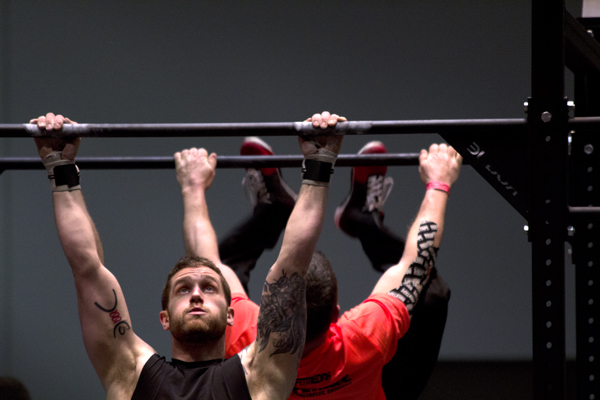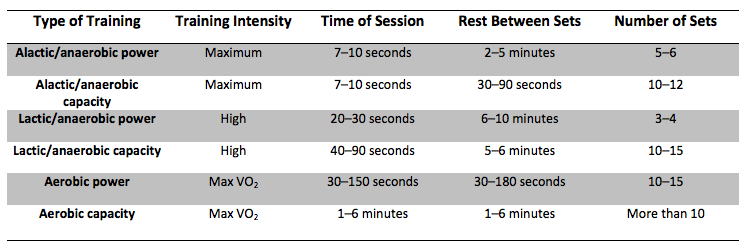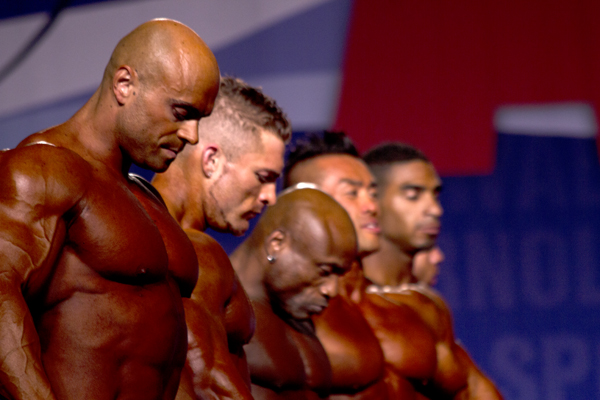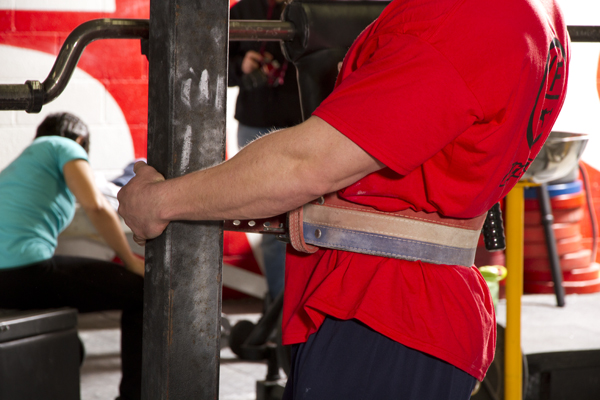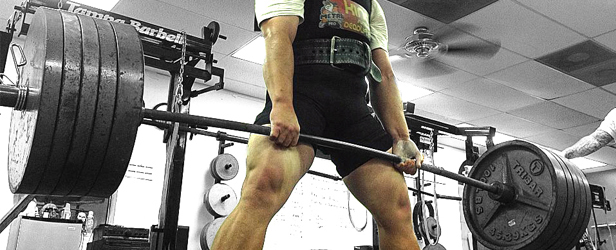
While driving the other day, I started thinking about some of the things I had been doing in the gym lately. I wondered if I was focusing on things that I needed to do to be successful. I'll be honest—this article may be somewhat selfish because it revolves around what I need to do in my own training. However, some of the thoughts here could possibly help others who have similar goals: focusing on maximal strength without many other variables to play with. I'm really not concerned about adding mass or much else. I just want to improve my results in the competitive movements (squat, bench, and deadlift).
While this seems like a fairly common goal among many readers of this website, we have to think about some of the other goals that many people try to work on while trying to get strong in a set group of movements. One guy may say he wants to hit an elite total while adding 20 pounds of mass and dropping his body fat to six percent. He also wants to develop a better outer sweep of the quad, be able to run hills with a Prowler® loaded to 900 pounds, and try out for an Arena Football League team. Of course, this is an extreme example, but you get the picture.
In this article, I'll examine some of the things that I account for in my athletes' or clients' training, but often neglect in my own. I'll evaluate my own training to see if I'm doing what I need to do for my competitive endeavor of choice or if I'm focusing (i.e., wasting) time on what isn't necessary.
When I was a younger, less experienced coach, I allowed my own training to influence my coaching. By this, I mean that because I was a powerlifter (I still am, sort of, but I don’t compete as often as I’d like), I was training athletes using a lot of powerlifting-style movements. At the time, I was influenced more by bands, chains, wide stance box squats, and max effort movements and I employed a lot of this with my athletes. This isn't unlike others I've seen who were Olympic lifters and used Olympic lifts with their athletes or strongmen who used strongman-influenced movements with their clients. Don't get me wrong—I’m all for coaches who train. This isn't necessarily a terrible thing, but the point here is that those separate styles of training may not fit what is needed for athletes in other sports.
Fast forward to the present. I've developed a much more holistic approach that focuses on training athletes like athletes and looks at the need of each player and position as opposed to just using blanket statements like “strength, speed, and agility.” I pretty much now program in generalities and I'm always adjusting to the needs of my athletes as opposed to trying to shoehorn them into exercises that don’t have much to do with their sport. I also plan according to the energy system demands of the game as well as the specifics of the position and the individual.
This is when I had my epiphany the other day. I was thinking about some of the things that I was doing with my own training. While my work in certain places fits what I need, I'm almost just going through the motions in other areas, not necessarily addressing what I need to do in my sport. This got me thinking. I had to go back and research a few variables that I think can address my needs as well as the needs of powerlifting. Understand that this is what I need to do, not a suggestion to be taken as something I think everyone should do.
Powerlifting, energy systems, and some thoughts
When looking at the sport of powerlifting, it's safe to say that the sport is almost completely alactic. We can venture further and say that in terms of competition, the training is a test of alactic power against a significant eternal resistance without any regard to the speed and time that the movement is completed in. So in other words, there aren't any style points awarded for having the fastest attempts in the meet.
With this in mind, here's a chart by Seluyanov that details some information about work to rest ratios and energy systems:
Looking at the chart, we can see that to train the alactic system, most work should be of maximal intensity and of durations no longer than 7–10 seconds. Something to consider is that the maximal intensity here isn't referring to the percentage of a 1RM but rather the intensity of the effort used. Think in terms of running a sprint at maximal speed as opposed to jogging. The body mass of the runner didn't change, but in the sprint, the amount of force produced and the intensity of the run are much higher. This can be done with weight training as well. The amount of force and the intensity of the effort can be high even if the external resistance isn't maximal.
However, the needs of the sport and the type of strength needed should be considered. In powerlifting, the ability to overcome a large external resistance is necessary. This doesn't have to be accomplished within a certain time constraint to guarantee a successful lift though. Even if one were to train for explosive strength, this could be done with weights of 70–100 percent to meet the needs of both maximal strength and explosive strength against moderate to large external resistance. This idea comes from Verkhoshansky’s Special Strength Training Manual for Coaches (page 50). This doesn't mean that percentages below 70 percent are useless. Much of this will depend on the needs of the lifter and his qualifications.
Many people will default to all accessory type loading or even secondary or primary movements (including compound movements) done with repeated effort in a lactic zone. I've made this mistake and sometimes I still fall into this trap. After all, everyone likes getting a pump. While this can be used at times to create trauma and stimulate GH production to promote hypertrophy, this shouldn’t be a focal point for a powerlifter. Many entry level lifters can have some favorable results temporarily, but this isn't as much an endorsement of traditional bodybuilding training on maximal strength as it is a reflection of the low level of training experience. This idea isn’t mine. When I was pondering this concept, I went back and referenced a post by James “the Thinker” Smith. In the Thinker's post, something that really stuck out for me is: “…it is my view that training in a lactic environment, for a powerlifter, is generally unnecessary. Even the increase in muscle cross-sectional diameter may be attained void of lactic efforts.”
This brings up my next point. Powerlifting isn't bodybuilding and vice versa. While increasing muscle mass can increase strength, other factors should be considered. Is the hypertrophy sarcoplasmic or myofibrillar? Is the gain in strength merely a product of better leverages (i.e., “mass moves mass”)? This isn't to discredit bodybuilding because if you look at the logs of some of the bodybuilders on this site or elsewhere, they aren't weak by any stretch of the imagination. However, look at the amount of mass that is carried by some as compared to powerlifters like Andrey Belyaev (110 kg/220 pounds). Much of this could possibly be attributed to training in the correct energy system.
While I'm not an expert on how Belyaev trains, I have a few translated documents that show a modified template similar to Sheiko, which is largely alactic. Some may be wondering about inducing hypertrophy and think that this isn't possible without using bodybuilding-type loading. However, the one key element here is to remember that adding mass, whether it's fat or muscle, involves taking in more calories than burned. Because of this, priority should still be given to loading, which falls into the alactic zone, as opposed to giving a large amount of the total loading to lactic, bodybuilding-style movements that may not contribute to strength but can interfere with recovery.
Much of the training with my athletes is based off the high/low sequencing of Charlie Francis. Within this system, alactic and aerobic work are prioritized. For speed development, it has been said that lactic work is too slow to enhance speed and too fast to promote recovery. We also have to include high central nervous system stress days, which further take away from the load of alactic work. Going back to powerlifting, we can theorize that too high an amount of lactic work can have a similar effect. While this can be used at certain points of training (generally in an early, preparatory part of training), this work should be limited as the planning progresses with more concentration on alactic work.
As I stated previously, the lifter should focus on what he needs to do in competition rather than what he doesn't need to do. A classic example of this is the well known (well, at least to meatheads) challenge between Fred Hatfield and Tom Platz. In this “squat off,” Hatfield worked up to a higher max (around 100 pounds or more), but Platz easily destroyed him in a reps contest with a weight that was actually a higher percentage of Platz’s max than Hatfield’s. In this case, Platz had a higher level of preparedness in a lactic zone and could win this reps challenge. However, in the test of alactic power (the 1RM), Hatfield had the edge due to his more regular level of training in an alactic zone.
There is a recent trend toward high frequency training. While some people have scoffed at this saying that it's too much to recover from, let’s look at some of the classic examples of high frequency training. Usually, these programs revolve around intensities of 65–85 percent for multiple sets of relatively low reps (mainly 2–4) or training maxes for sets of usually 1–2. Many don’t consider that this is the bulk of the work. There aren't 4–10 other things afterward that may be general, bodybuilding-type accessories in lactic zones. Without these additional movements, which may be actually impeding recovery, the overwhelmingly alactic workloads look a little less daunting. While these programs may demand a lot neurologically, there isn’t necessarily as much stress or trauma to the muscles. I'm not saying that high frequency training is the wave of the future, but it isn’t the work of the devil either.
I've decided to make some changes to the way I've been training. I'll continue to use a high frequency approach. By focusing on alactic loading, I can have greater recovery while still training frequently. I'll focus on using the guidelines of Seluyanov’s energy systems to dictate the duration of the sets. Again, these are guidelines. Not every exercise I perform will be governed by this.
The majority of my work will be alactic. Within this, at times there may be a focus on alactic capacity with lower percentages to address work capacity. In earlier blocks of training, I'll include some work that may be lactic if appropriate for the goal. The work performed on low intensity days will be aerobic and can include weight room exercises if structured correctly.
As opposed to using only sets and reps designated by a number of repetitions, I'll begin to also include time as a factor to adhere to the guidelines. Within this, I'll also include autoregulation, such as setting a baseline number of reps and performing sets until I can't keep that number of reps (with a one-rep margin of error). The majority of my work will be at 70–80 percent of my training max with smaller percentages at 60–70 percent, 80–90 percent, and over 90 percent.
It's important to always look at the needs of the competition and figure out how to increase performance in that set of skills. Some coaches waste the time of their athletes by prescribing things that aren't necessary. However, when examining our own training, we always have to examine whether or not we're doing the same thing for our athletes. There should always be a purpose behind everything we do whether it's for an athlete, a client, or ourselves.









